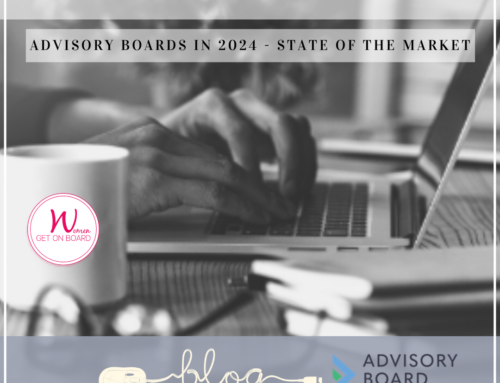Innovation and disruption are top of mind for every board. Women Get On Board recently held a panel discussion to provide expert insight on the board’s role in guiding transformational change and learning to embrace risk. Hosted by KPMG, the panel was moderated by Lori O’Neill, board member and independent governance consultant. Panelists included Craig O’Neill, CEO of VersaPay and Leslie Luk, audit partner in KPMG’s technology, media and telecommunications practice.
Building Trust
Boards are necessarily focused on risk management and compliance, particularly in a public company context. Encouraging the board to consider risking truly transformational change requires the CEO to take deliberate steps to build trust between the board and management.
Craig O’Neill took VersaPay through a transformational change which involved selling their main revenue-generating asset to create the bandwidth to focus on new directions. Getting board approval for such a dramatic divestiture required focused trust-building.
“When you can build that trust and that healthy tension, it’s kind of magical,” said O’Neill. “You can be very productive as a board if you have it. If you don’t have it, it can be very unproductive and very, very divisive.”
Key tactics included putting a premium on transparency. O’Neill used a “skip level” approach by which he put key board members in direct touch with his direct senior reports including the CFO, keeping a close eye on roles and responsibilities to counter the tendency of board members to meddle in operations if they get too close to management.
“I wanted them to know that what I tell them is straight up the truth. It’s not varnished, it’s not filtered. You’re going to hear the good, the bad and the ugly. If there is any bad and ugly–and there is always bad and ugly–you can trust what I’m telling you,” said O’Neill.
Leslie Luk advised that establishing mutual understanding with the board about the type and frequency of information flow is key to establishing board trust. She suggested that pre-meetings with the Audit Chair could also go a long way to help.
Let Sub-committees Take a Deep Dive
The panel recommended establishing sub-committees for the really big transformational decisions. Sub-committees permit a small number of board members to set aside the time for a focused deep dive in the issues. While the ultimate decisions remain with the board, the fact that some board members are recommending the change from an informed position may encourage a higher trust level by the rest of the board members in terms of embracing transformational risk.
Sub-committees should be established with a specific purpose and with the same rigour that a Board would put into establishing the audit committee. Be purposeful about identifying the special skill-sets required from sub-committee members to get the best governance oversight.
Implementing Implementation
Many strategies die on the shelf. Tone from the top is key to encouraging management to actually operationalize the strategy once it has been approved. Adopting an innovation culture can also help de-risk a project.
“Fail quick and fail small,” advised Leslie Luk. “Try things on a smaller scale. Having the board with that mindset will help incentivize management to actually try things.”
It is critical that management establishes appropriate indicators and consistently reports on them as a standing item on each quarterly board meeting agenda.
“The board has to ask management, ‘what are the signs of success?’,” stated Craig O’Neill. “Lead indicators. Not lagging indicators. What do we watch to see if we are on the road to success, not lagging indicators that will let us know that we have already succeeded in the past. We use a report card on both leading and lagging indicators, but the lead indicators are way more important.”
Women Get On Board is a leading member-based company that connects, promotes and empowers women to corporate boards. We do this through an engaged community of women and men in Canada committed to advancing gender diversity in the boardroom. Find out more about becoming a member of Women Get On Board.





